Color Genetics in Newfoundland Dogs
This is quite possibly my favorite topic relating to Newfoundlands.
My stance is that discriminating against any color in Newfoundlands is the dog world equivalent of racism. So any breeder, fancier, or person that tells you a beige Newf is any less than a grey Newf is probably secretly a racist behind closed doors.
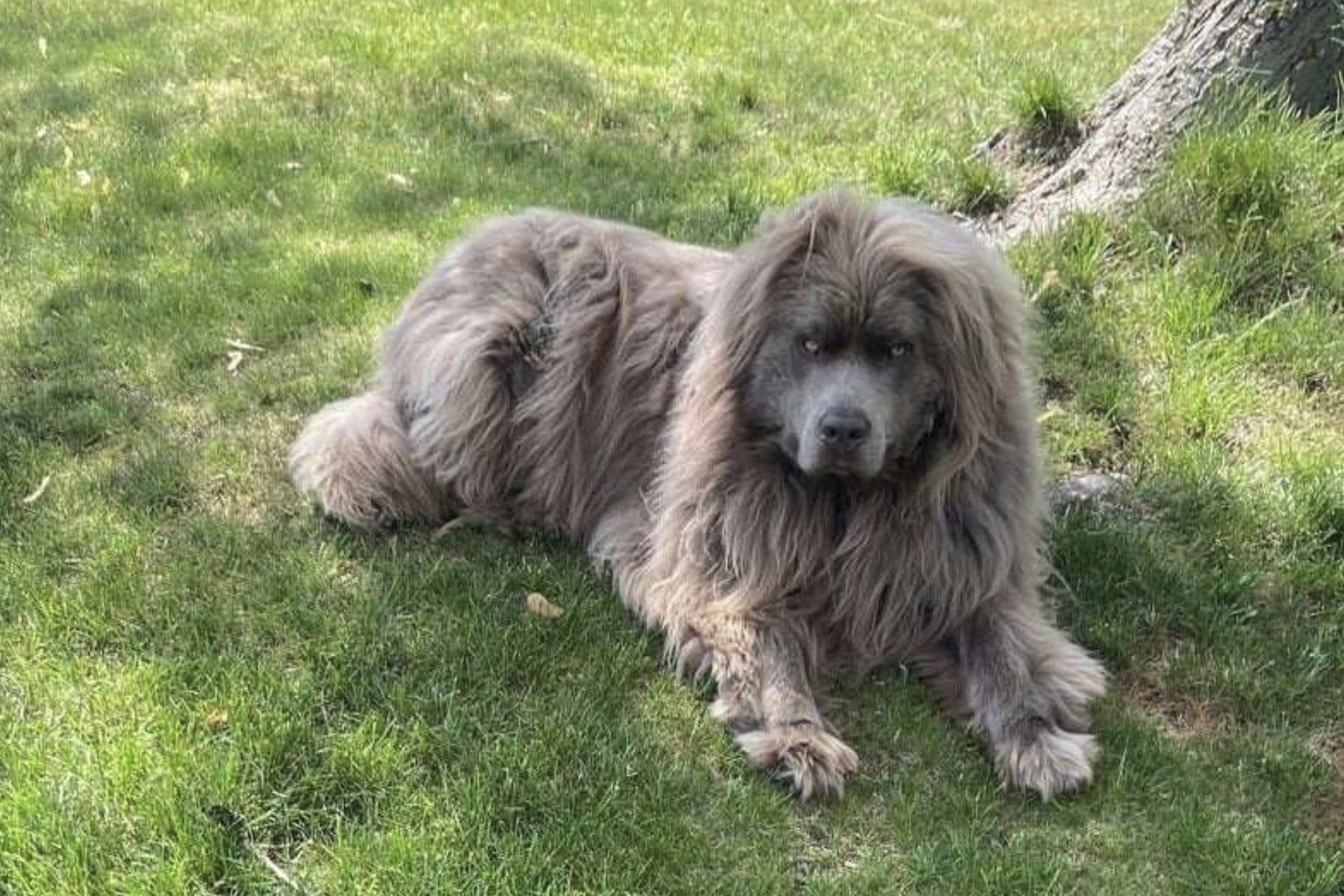
I am so passionate about this topic, I wrote many of my high school persuasive English papers on the topic. And even did a speech on it in my college communications class. It made homework easy, but I think it was lost on many of my teachers and classmates.
They just didn’t care.
Hopefully, genetics is not lost on you as well, because after reading this you should have a much better grasp on Newfoundland color genetics than the average person. Dare I even say… the average breeder as well.
And maybe someday we can change the status quo. I’m all about shaking things up for the better. In a perfect Newf World, no one would look down on any Newfoundland just because of the color of its fur.
Common Possible Newfoundland Color Combinations
Purebred Newfoundlands can come in eight different common colors.
- Black
- Black and White (Landseer)
- Grey
- Grey and White
- Brown
- Brown and White
- Beige
- Beige and White
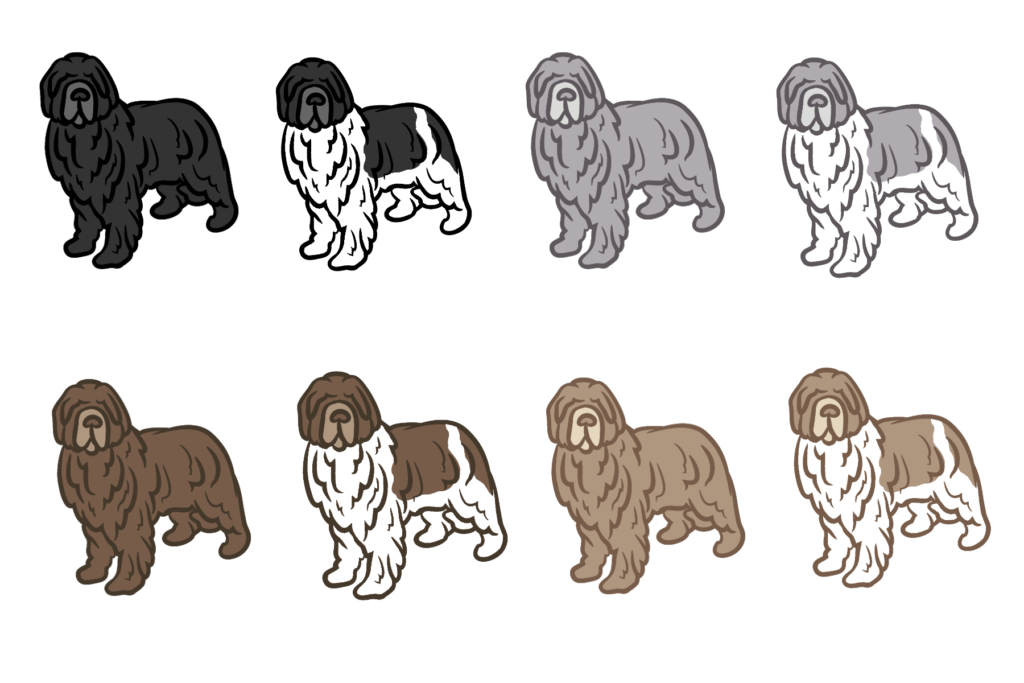
Black and tan Newfoundlands as well as some other color varieties are also a possibility, but the odds of that happening are so incredibly rare that we will stick with the eight listed above for the purpose of this article.
Newfoundland Dogs Only Come in Two Colors
If they only come in two colors, why did I list eight possible colors above?
That is because there are two base colors, black and brown. These colors are controlled by the B locus with black (BB and Bb) being dominant over brown (bb). It’s important to know that brown is not a mutation of black. It is its own genetically coded color. All of the other colors have modifier genes that make them different from plain black and plain brown.
What are the Modifier Genes?
Modifier genes are what can make a dog go from solid black to black and white or from brown to beige.
Dilute Modifier Gene
The dilute modifier, which will give you the grey and beige, is controlled by the D locus with non-dilute (DD or Dd) being dominant over dilute (dd).
If you put the dilute modifier over black, it will give you a grey Newfoundland, an acceptable show ring color in the United States. While putting the dilute modifier over brown will give you beige, an unacceptable show ring color in the US.
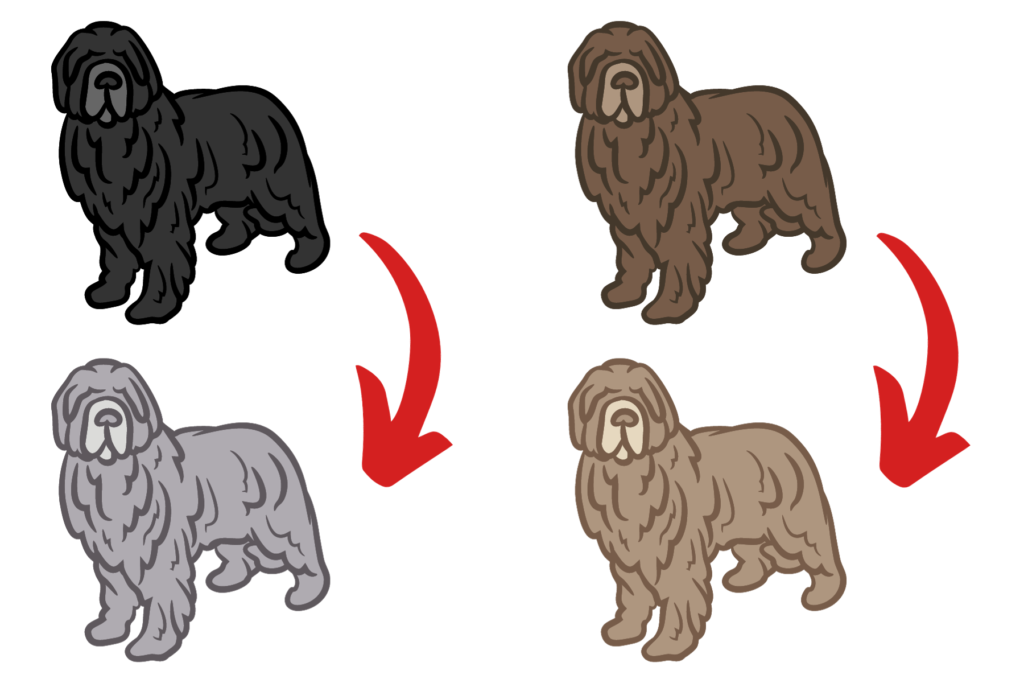
Solid or Spotted Modifier Gene
The same goes with the solid modifier controlled by the S Locus with solid being dominant over the spotted or Landseer variation.
Let’s dig a little deeper and remember those days of high school biology class, more specifically the genetics lesson. I loved that lesson.
With the S Locus genetics labs are not specifically testing for the Irish spot or pi-bald (Landseer) patterns. At the time of writing, they do not have the capabilities to test for that. They are simply testing for homozygous genes (meaning the same) and heterozygous genes (meaning they are different).
In the black versus brown example, homozygous genes would be expressed as BB (black) or bb (brown). Heterozygous genes are different than each other and expressed as Bb (black with a recessive brown gene).
Applying the Modifier Genes
If you put the spotted modifier over a black dog you will get a black and white Landseer, again, an acceptable show ring color in the US. Genetically, a black and white Landseer is still a black dog. The modifier genes are what cause the white to express in the coat color giving you a black and white dog.
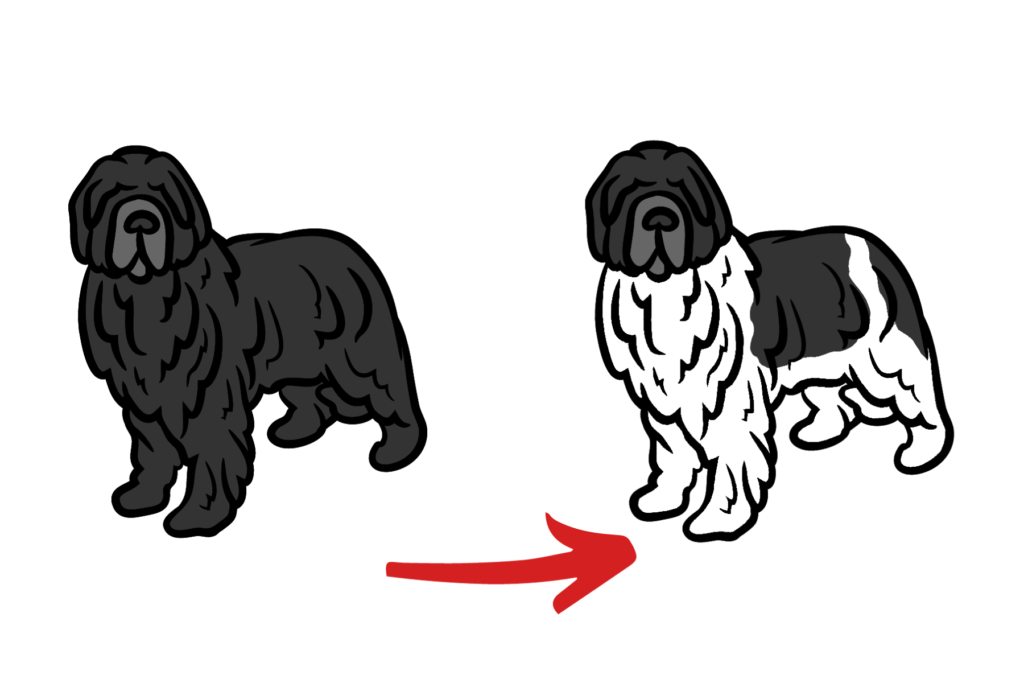
When you put the spotted modifier over a brown you will get a brown and white Newfoundland, an unacceptable show ring color in the US. Again, still, genetically a brown dog with white markings expressed due to the modifier gene being present.
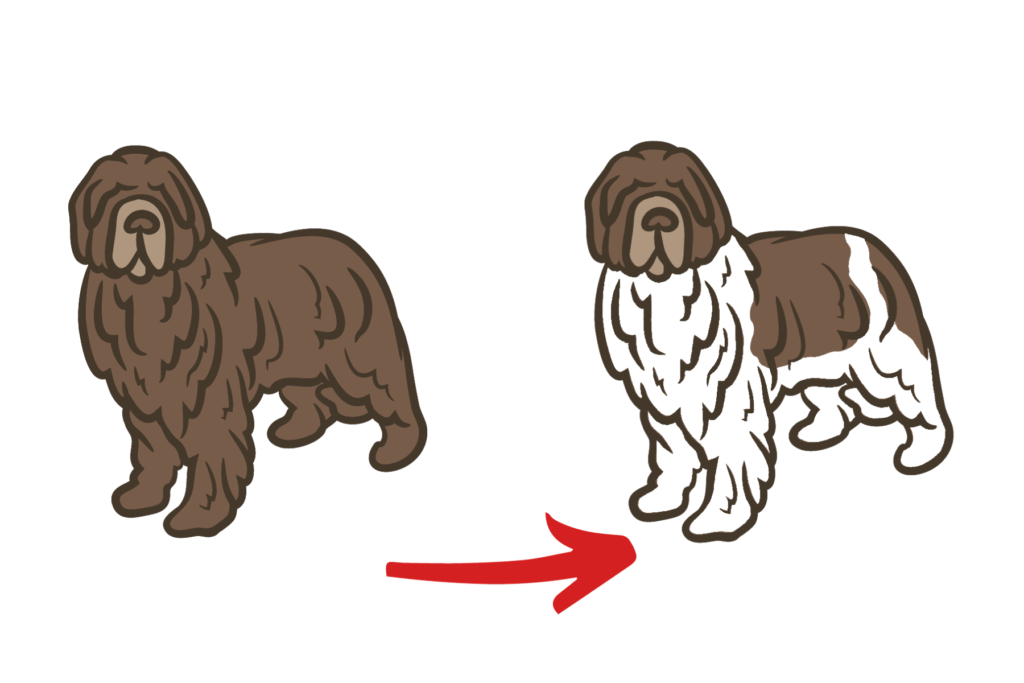
To make it even more interesting, to make a grey and white Newfoundland you would need to have both the dilute recessive trait and the pi-bald recessive trait on a black dog. The same recessive genes expressed on a brown dog will create a beige and white Newfoundland.
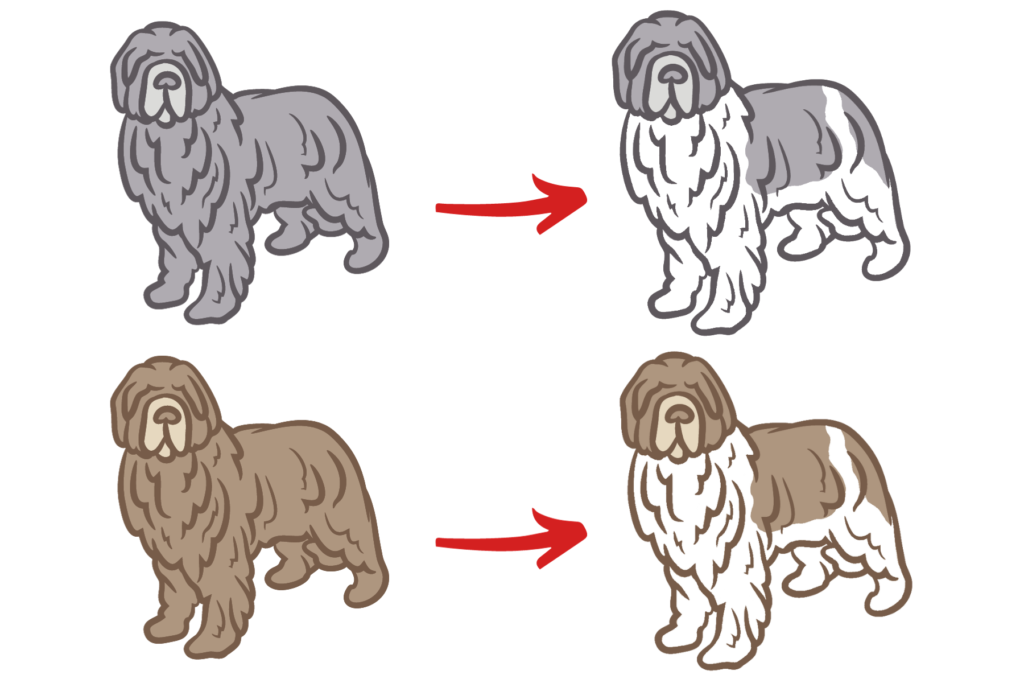
What Does Acceptable Show Ring Color Mean?
This is actually pretty simple. An acceptable show ring color means that you can show the dog in a conformation class without being disqualified.
In the United States, these colors for Newfoundland dogs are black, brown, black and white (Landseer), and grey.
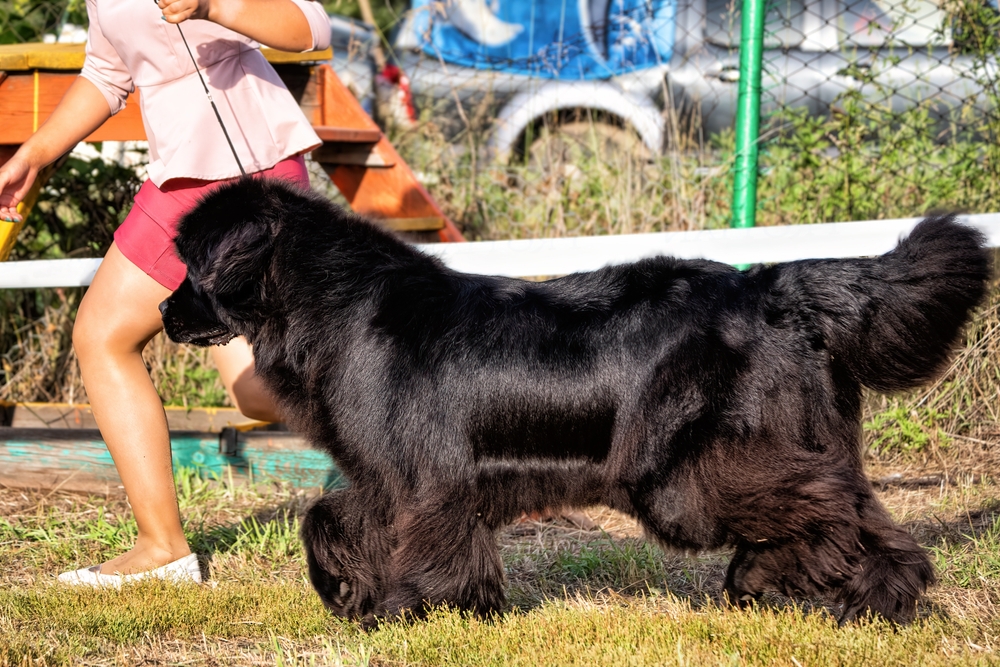
The American Kennel Club (AKC) accepts the eight colors I have listed at the beginning of this article as colors Newfoundland dogs come in. That means they can be registered by the AKC, bred (their offspring can be registered), and earn all titles and awards, except for a conformation championship. Sounds like discrimination to me.
History of Color in Newfoundland Dogs
Breeding history of dogs first became fashionable in late Victorian times. Prior to that, there really wasn’t any record of what dogs were bred to what dogs. Most of our knowledge of color relating to Newfoundlands comes from listings of lost or stolen dogs as well as those for sale or auction.
Based on the listings, very few Newfoundlands were originally black in color.
Paintings and drawings from the 1740s to the 1840s showed Newfoundlands as black and white and sometimes even brown and white. However there is no convincing evidence to support the existence of solid black or brown dogs during that time in Europe.
After being portrayed by Sir Edwin Landseer in the early 1800s, the black and white Newfoundlands began to be referred to as Landseer Newfoundland. A term we still use for Newfoundlands with that marking pattern today.
Further Reading
If you would like to read more about the genetics of Newfoundland dogs, I have attached a few links at the bottom of the post for you to check out.
Should These “Rare” Colors Cost More?
Notice how I put rare in quotes. They aren’t actually rare. Give me a few generations of dogs to work with and I could produce every single one of these colors.
If I can do it, surely others can too. But they don’t.
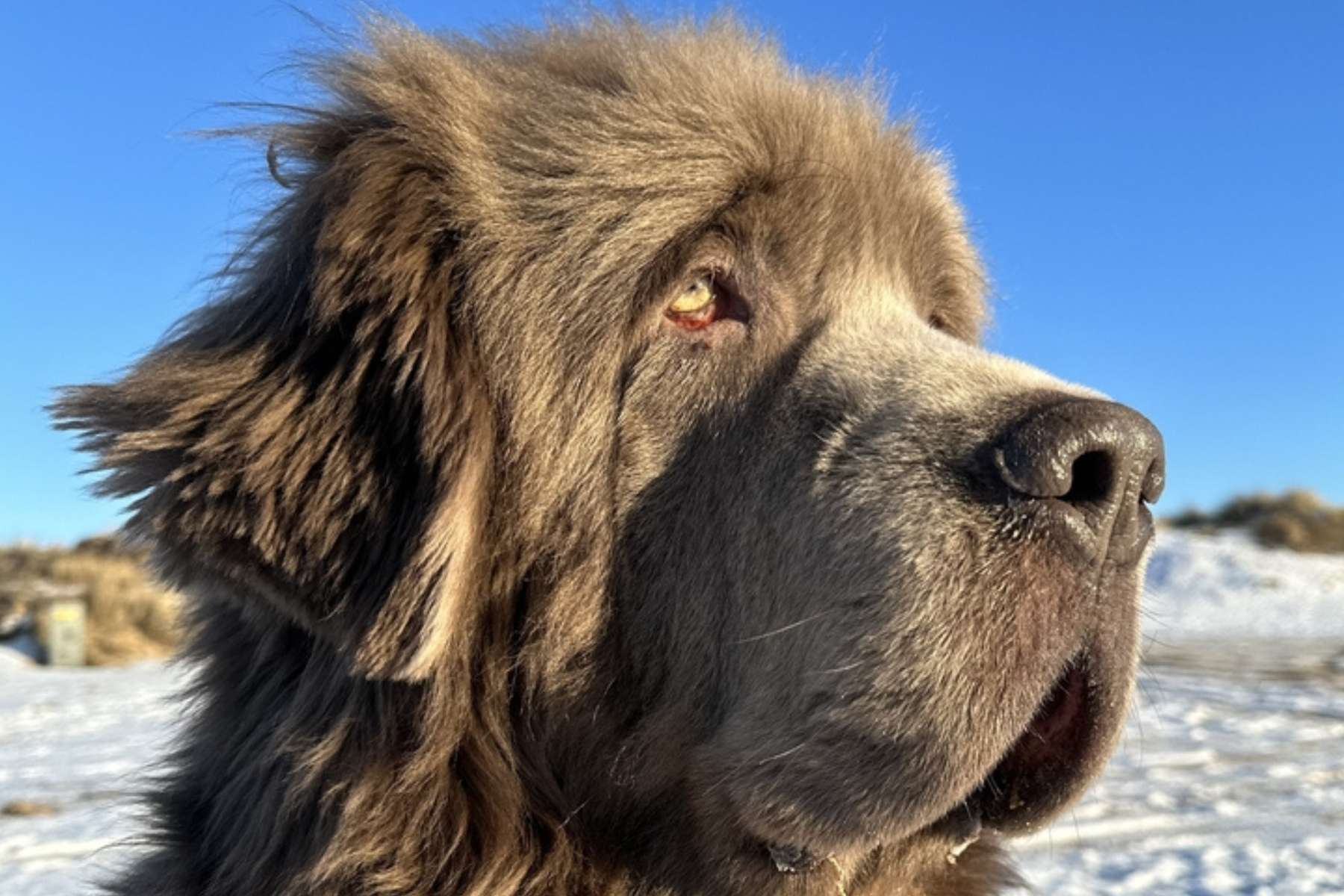
Why is that?
Because they will be ostracized and looked down upon by their fellow breeders.
People within the Newfoundland community will see these people as nothing more than a backyard breeder because of the colors being marked as undesirable by the status quo. They won’t care whether the breeder does health testing or not. They also will not care if the Newfoundlands being bred are quality or not. As soon as they see the color is a non-standard color, their minds are made up.
This in turn creates a niche market for the less than desirable breeders to exploit those colors.
Oftentimes less than desirable breeders are not breeding for the health or quality of the breed. Due to these colors having the perception of being “rare” they are able to charge more for them from the unsuspecting buyer.
Charging more for different colors is an unethical practice in breeding.
Do These Colors Have Additional Health Issues?
One of the common arguments for not breeding Newfoundlands in what I have dubbed “fun colors” is health concerns. While I can see that as a valid argument for how they are being bred by the backyard breeders and the puppy mills today…
It is actually an invalid argument.
If breeding for these colors is done correctly by a responsible, ethical breeder, any additional health concerns would be minimized. Just like they are with the standard, show ring acceptable colors.
How Do We Change The Status Quo?
Education.
This goes for the breeder, prospective puppy buyers, and any fancier of the breed.
I have always wanted a grey Newfoundland and always get incredibly excited every time I see them at dog shows. When I saw someone with not one, but two greys at a dog show this past summer I had to talk to her. Turns out she was a breeder too.
Now, I have my own breedings planned to make my future grey dude, but I was curious what she knew of the color. So I asked her all kinds of questions.
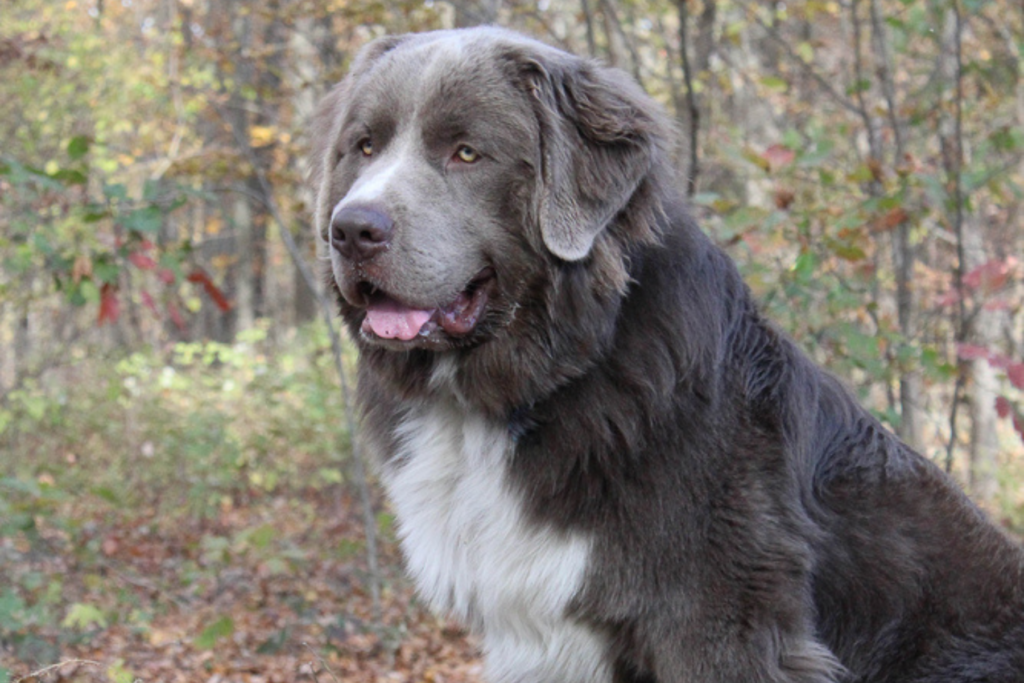
Much to my disappointment, she didn’t know any more than the average person. She cited every single propagandized version of why you have to be so careful when you are trying to produce a grey dog.
My favorite of which being the darker the grey color on the dog the healthier they are. And if the dog leans more to the lighter, silver-grey color they are inherently less healthy.
What?!
If I were an average puppy buyer looking to purchase a dog and found this breeder, I might have thought she was an expert on this topic. Unfortunately, the lack of adequate knowledge would have been perpetuated.
In reality, the shade of a particular color has absolutely nothing to do with health. It is yet another set of modifier genes that control the saturation of color. I can address this in a future article.
Research and Resources
If you want to get a Newfoundland of a different color than what is standard and accepted within your country, it’s important for you to do your own research.
There are a variety of forums where people are more than happy to share their knowledge of the breed and color. But be wise about it, regardless of the facts and science surrounding the topic, some people continue to perpetuate the propagandized version. I think this is because they are followers and can’t do any critical thinking for themselves.
But hey, what do I know?
I’m just a girl with a blog, a dog, and an opinion, backed by science and facts.
Don’t forget to pin this post and share with other Newfie lovers!






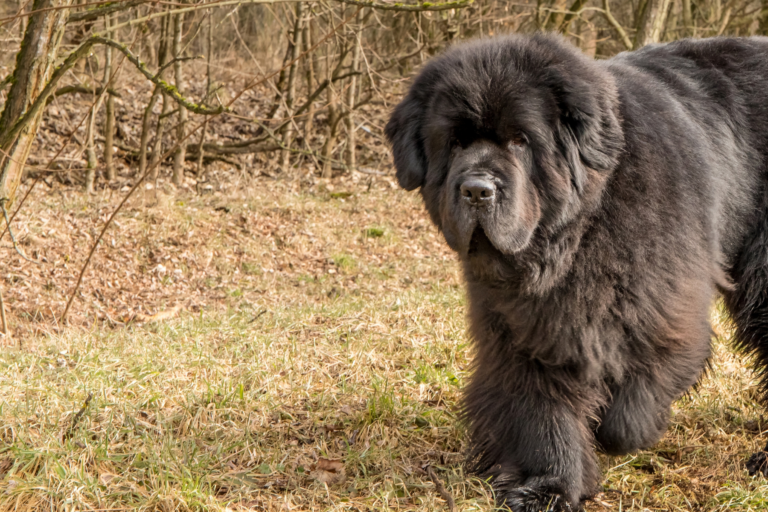
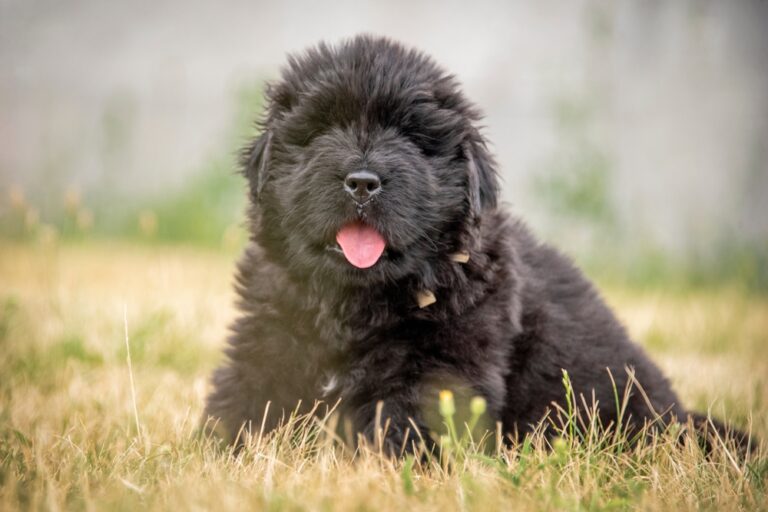
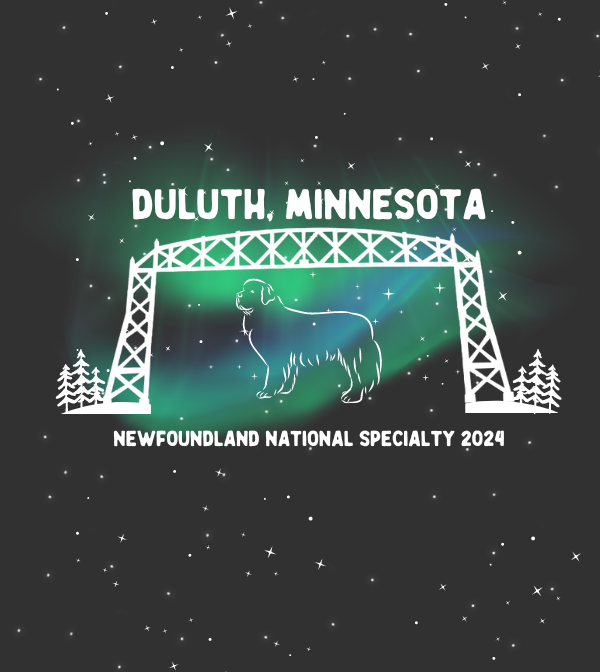

I really enjoyed this one. I’m recessive-gene-averse due to health concerns but, as you say, that’s more to do with the way people behave around breeding than the inherent nature of genetics. Thanks for the article!
Thanks for your comment! I wish more people would be open to the possibility it’s the lack of proper breeding practices and not something that can always be blamed on the genetics.
I enjoyed this article my two Newfoundlands just had puppies and we had three puppies that are grey. And both parents are AKC. We were shocked and now decided to keep the two females that are grey not to breed but as pets cause they are beautiful and can’t wait to see them get older.
Congratulations on your litter!
Grey is a beautiful color in Newfies. I remember the first time I saw one was at a dog show in Michigan when I was a kid. I’ve wanted a grey ever since!
I have a friend that is looking for a Grey.
How can I contact you?
Great article. I have a dilute brown and white puppy. Her father is dilute brown solid and her mother is brown and white. I researched her breeder and found her to be quite ethical and responsible. She did a wisdom panel on her and all results were normal. She does seem more long legged and lankier like the European landseers. At four months, she is not as fuzzy as my black one was at her age. It will be interesting to see what she looks like as an adult.
Thank you!
I’m not familiar with a wisdom panel, I’ll have to do some research on it.
As puppies grow, they turn into awkward looking teenagers before they finish maturing. The long legs and lankiness should correct itself. And the less fuzz could just be because she has less hair. Dogs, like people, all have different traits that are expressed 🙂 I hope she grows into everything you have hoped for!
Based on your article, your knowledge & opinions somewhat differ from mine. Any breed’s standard exists for a reason – so the animal (for our discussion – dogs – & particularly Newfies) looks & performs a certain way that the original breed developers determined to be best for their purposes. The “looks” are NOT just the aesthetically eye pleasing aspects, but contribute to the performance of duties expected from the dog. What if a Newfie was born with SHORT HAIR? Or Dwarfism? Or a naturally bobbed tail? Would you think that it’d be OK to breed THOSE dogs back into the population – regardless of what color they were born? Those examples would be hard-put to perform the original duties & under the original conditions for which Newfies were developed.
In many species, color does/can translate to differences in “performance” … some comparatively for the better … some … not-so-much.
You seem to be “TOO LENIENT & ACCEPTING” of less than desirable examples of your breed – even if at this time it is only color – which in the long run could work to it’s detriment.
Based on your comment it seems entirely possible you did not read the article I wrote.
My article had nothing to do with actual defects of a dog. The examples you gave of short hair, dwarfism, and a naturally bobbed tail are all defects.
Do I think it’s acceptable to breed dogs with those defects you listed or other true defects? Absolutely not. Those would be a detriment to the breed if bred.
The article was about the genetics of what causes coat color and my opinion that people, like you, that think the coat color in Newfies causes them to perform their breed duties differently are wrong. Color is not a defect. Even the breed standard has a section on color that says, “color is secondary to type, structure, and soundness.” While it does go on to list acceptable colors being black, brown, grey, and white and black, this acceptability applies to the show ring since you can register other colors that are not those via the AKC. You can even earn AKC and NCA titles with other colors outside of the show ring.
By you saying color affects their ability or lack of ability to perform their breed duties is the equivalent of saying any race due to skin color are less than desirable examples of humanity and therefore unable to hold a job simply because of their skin color.
I’m not understanding how the aesthetic looks of a dog in terms of color can affect their performance of breed duties. Can you tell me how a beige Newfoundland would be unable to pull a cart or rescue someone from the water if it were trained to the same standard as a black Newfoundland?